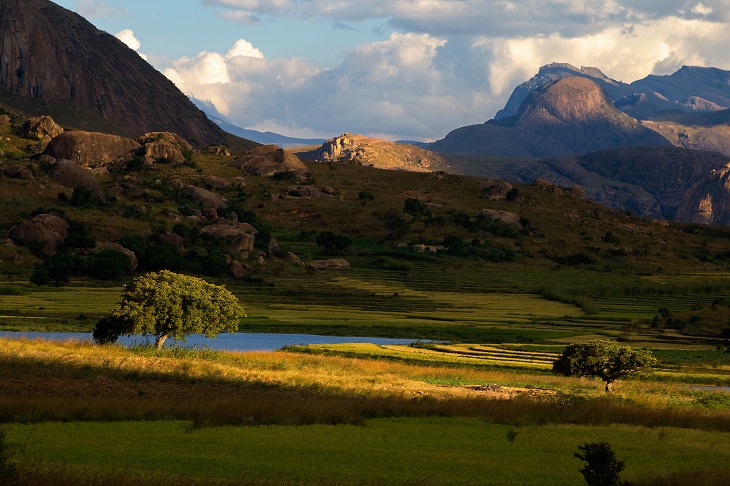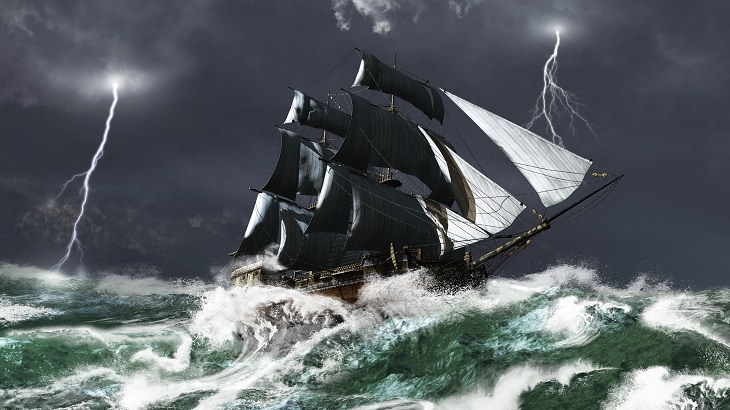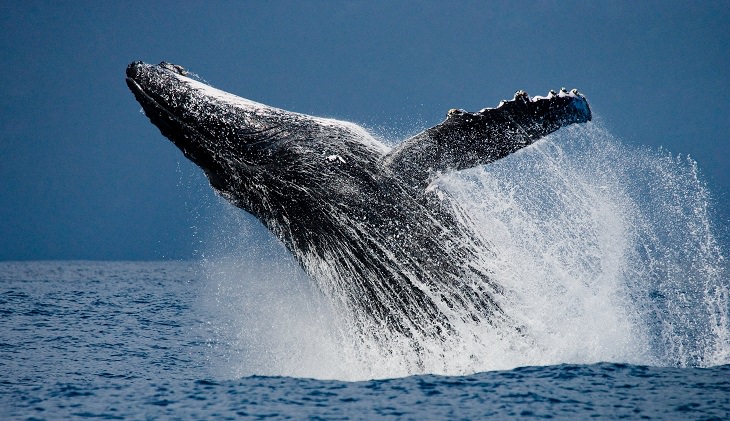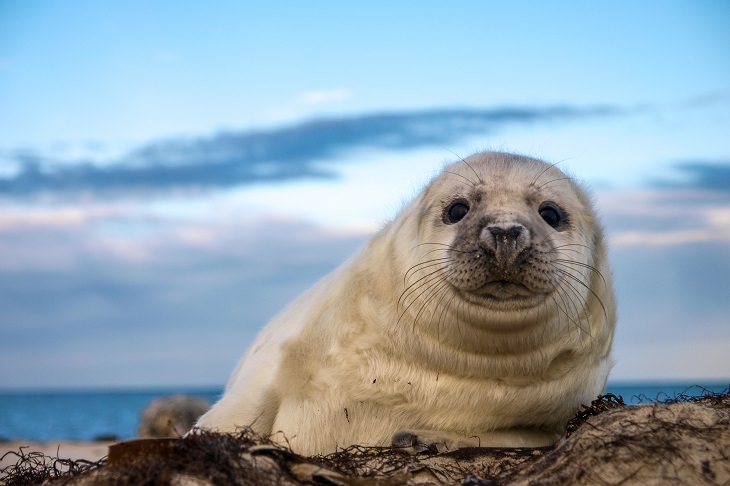
Serrano is considered to be the first castaway survivor. To this day, it’s still not clear how the Spaniard’s ship sunk or how he ended up alone on an island in the Caribbean, but he did. He made it ashore with just a knife and the shirt on his back.
The island in question was little more than a strip of sand, mostly devoid of flora and shade. Also, this was still the New World and Serrano knew that ships weren’t going to be regularly popping up on the horizon.
Serrano’s survival depended on turtles. He ate their meat and used their shells to collect water. With no other animals present on the island, he was unable to clothe himself when his only clothes fell to rags. Therefore, his only relief from the sun was to take a dip in the ocean.
Three years passed before Serrano spotted a ship, which wrecked, dashing Serrano’s hopes of being rescued. A single sailor survived and made it to Serrano’s island. Serrano, more beast than man, originally terrified the beleaguered sailor, but they were able to eventually cooperate and preserved their sanity by observing a strict schedule each day.
Of course, sharing a tiny strip of sand, eating nothing but turtle meat and being boiled by the sun would make anyone a little irritable. Therefore, at some point during their four years together, Serrano and the other sailor split the island in half. They were eventually rescued by a ship that passed by.

Unlike most castaway stories, isolation wasn’t the main problem when The Batavia ran aground back in 1629. In fact, hundreds of people made it to an island off the west coast of Australia, but the wreck was only the beginning of the ill-fated crews’ troubles.
Cornelisz, one of the ship’s officers, had tried to mutiny when the vessel was shipwrecked. Afterward, the ship’s captain took a dinghy and 40 men to sail for Java, promising to come back to rescue the other survivors. With the captain gone, Cornelisz became the ranking officer. He had to worries to contend with, such as running out of supplies and being arrested for attempted mutiny if help arrived.
Cornelisz began his reign of terror by hoarding all the salvaged provisions from The Batavia. Those who were loyal to him guarded the stock around the clock. To decrease the number of survivors, Cornelisz and his men used the lifeboat to drop groups off on barren islands to search for water – and by search, he meant to die, as he had no intention of returning to pick them up.
He planned on hijacking the rescue ship and wanted to get rid of any competition on the island. He and his men started executing survivors for minor offense or none at all.
During his killing spree, a gathering party signaled that they had found food and water on another island. Unfortunately for Cornelisz, that party was led by a soldier called Wiebbe Hayes, who had figured out Cornelisz’s deadly plan.
Hayes and 45 men defeated their heavily armed attackers with slingshots and pikes and imprisoned Cornelisz in a pit on the beach. Undaunted, surviving mutineers started bombarding Hayes’ position with cannon fire just as the promised rescue ship appeared on the horizon. Several months had passed and over 100 people had died before the rescue ended the mutineers’ reign of terror.

Drury was an English sailor on The Degrave in 1703. After their ship was damaged, they were forced to abandon it near Madagascar.
Drury and the rest of the crew spent four harrowing days on Madagascar trying to evade 2,000 Tando warriors. When they were finally caught, the Tandroy executed every man apart from Drury and 3 others. These four survivors were enslaved and Drury spent eight years as a royal manservant. He worked hard to gain some respect, eventually even fighting alongside his Tandroy captors. As a result, Drury was granted a degree of freedom, and he was allowed to marry a fellow captive and raise cattle of his own.
After almost 15 years as a slave, Drury escaped Madagascar alone, aboard an English slave ship. His wife refused to leave, fearing the Tandroy myth which promised an unnatural death to any slave who escaped. Drury actually struggled to fit in in English society, and in a bizarre twist, he returned to Africa as a slaver.

The Peggy was returning to New York in 1765 after trading in the Azores. For almost the whole month of November, The Peggy struggled to cross the Atlantic as it was battered by one storm after another. The mast, sails, and rigging were badly damaged during these storms. To add to this, the hull was leaking badly.
The few provisions that survived the storms were quickly used up as the crew worked tirelessly to keep The Peggy afloat. It soon became obvious that the men would starve to death long before reaching land, even after the ship’s cat was killed and eaten. Their only hope was that another ship might pass by.
Initial talks of cannibalism were shut down by the captain, David Harrison, but it was futile. By mid-January, the crew had eaten all the leather and candles aboard the ship, and with Harrison bedridden, the crew turned to cannibalism. The customary lottery was mere pretense – the crew had already decided that Harrison’s black servant should be the one to make the sacrifice.
At the end of January, the servant was finished and the captain clung to life on a mixture of water and rum rather than eat other humans. A second lottery was conducted, but the victim, David Flatt, was given a night’s reprieve to pray thanks to the pleas of a haggard Harrison. Luckily for Flatt, a London-bound ship brought salvation for him and the rest of the crew the next morning.

In 1819, The Essex left Nantucket for what was expected to be a two-and-a-half-year whaling expedition. On the second day of their voyage, strong storms seriously damaged the ship and threatened to sink it, but the ship was repaired and pressed onward. Several months later and a thousand miles from land, an enormous whale rammed the ship. As the crew was assessing the damage, the whale struck again, holing the ship so viciously that the men hurriedly lowered the boats and grabbed some provisions.
The 20 men, spread across three boats, decided to head south for fear of cannibals on the nearest land, the Marquesas Islands. It was a fateful decision. Within a matter of weeks, the boats were leaking and the food was all gone. The first man who died was immediately eaten. Three more sailors passed away and they were also eaten. One of the three boats disappeared and was never seen of again. The other two boats, one led by Captain Pollard and the other headed by First Mate Owen Chase, became separated.
After nearly three months at sea, Chase’s boat was rescued by an English ship. Aboard Pollard’s boat, the men drew lots and Pollard’s younger captain was next eaten, though Pollard asked to take his place. A week after Chase was rescued, an American ship found Pollard and another crewman gnawing on the bones of their shipmates, crazed with hunger.

Captain Charles Barnard spotted smoke while on a sealing expedition near the Falklands in 1812. When he took a closer look, he found 45 shipwrecked British sailors. Barnard promised to deliver them to the closest South American port so long as they agreed not to hijack the ship.
Proof that no good deed goes unpunished, when Barnard stopped on another island to hunt pigs to feed everyone aboard, the Brits he rescued from certain death stole his ship. Barnard never imagined that the British sailors would leave three of their own to die with him.
Barnard, his one fellow American, and the three Brits survived for 18 months on various islands and in their rowboat until a British ship rescued them in 1814. Barnard and his companions, now all “Americans,” asked to be put ashore in his boat off the coast of Peru, only to be identified and imprisoned as Englishmen by Spaniards.
It took months for Barnard to clear his name, but he once again found passage on a British ship and asked to cut loose in his little seal boat, this time to do some sealing. Barnard did not find the seals he was after, but he did find an American ship that offered him passage. Barnard accepted the offer and sailed to China and the Sandwich islands before returning to America in 1816.
Source: listverse
Images: depositphotos